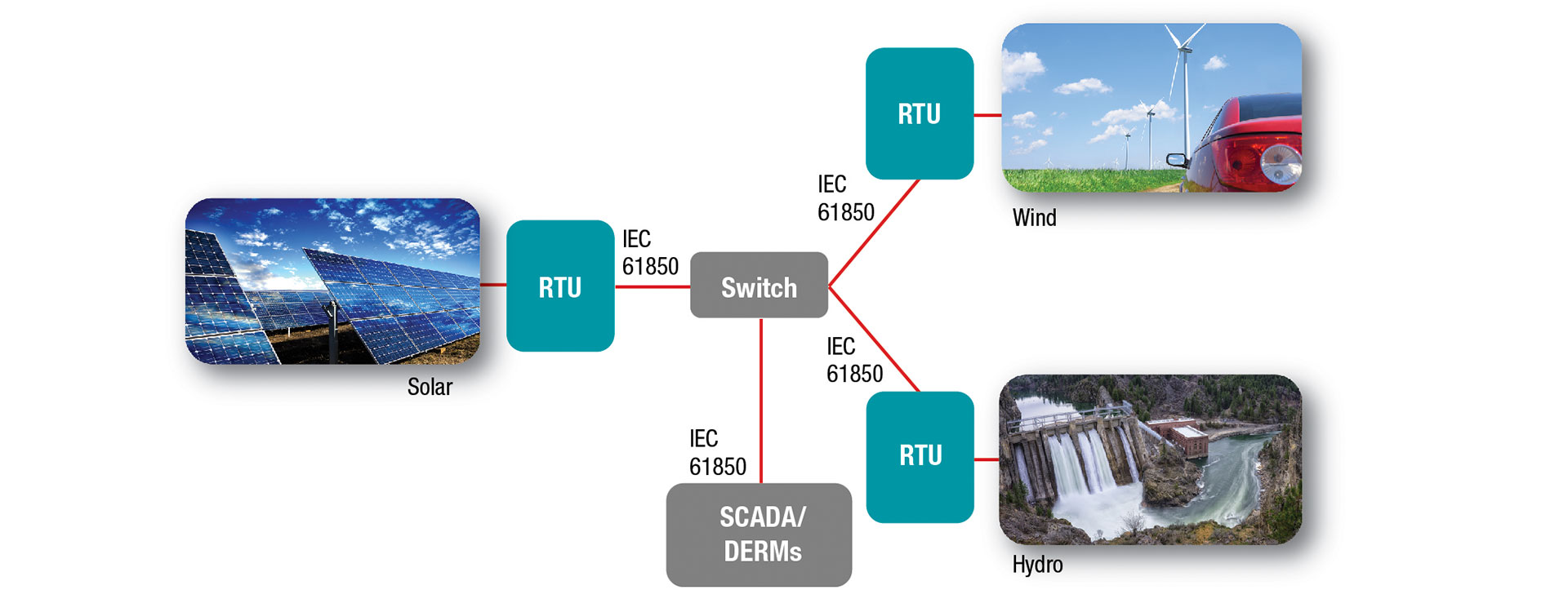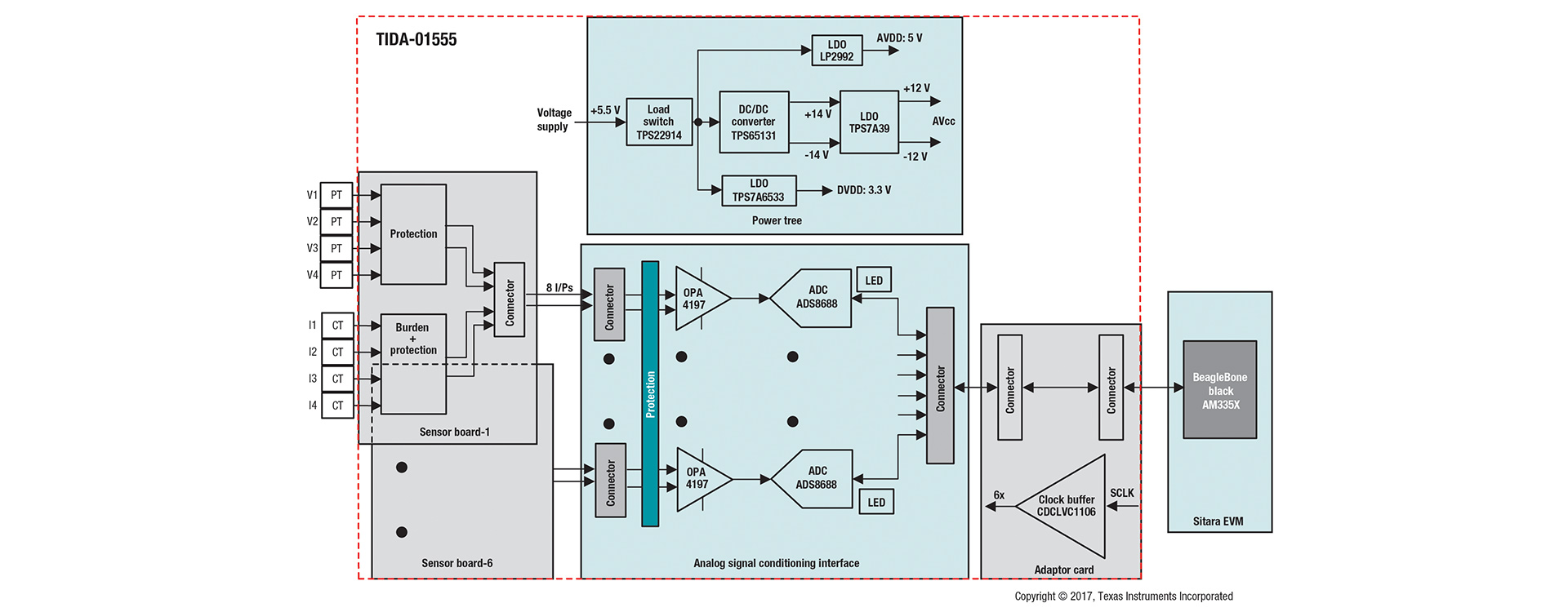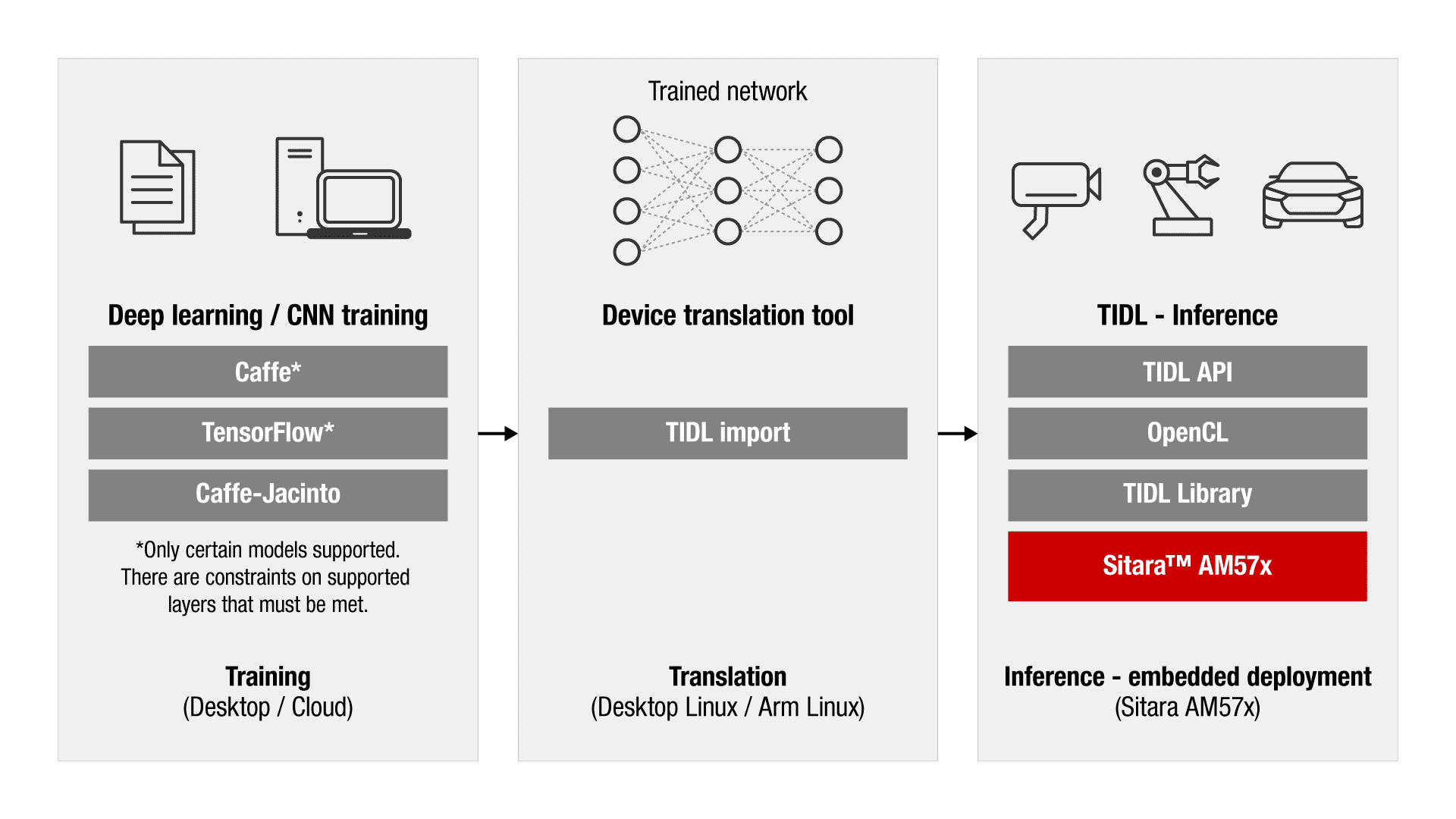SSZT402 october 2019 AM5749
Microgrids are becoming a popular solution for increasing the availability of power and optimizing energy costs. In remote areas, microgrids take the place of traditional power grids by using renewable energy, like solar or wind power. In areas with a traditional power grid, microgrids offer an alternative power source that can be activated during times of high demand on a traditional grid. Having multiple sources of power increases the likelihood of power availability during emergency situations, like a natural disaster.
What makes microgrids an effective companion to their traditional power grid counterparts? Increased agility from more communication, control and automation.
Microgrid systems use advanced distributed energy resource management systems (DERMS) to see all sources of power, as well as the power consumed by residential and commercial areas. DERMS rely heavily on knowing what is happening at each source of power as power from renewable sources fluctuate throughout the day. After analyzing the information, a DERMS needs to assign and distribute resources as necessary.
A critical enabler for this type of communication network is the remote terminal unit (RTU). RTUs span a wide variety of functions including:
- Improving communication within the network.
- Providing direct control over equipment.
- Adding additional intelligence at the edge.
- Converting data into relevant, actionable information.
Communication within the network
Microgrids leverage existing communication protocols like the International Electrotechnical Commission (IEC) 61850, Distributed Network Protocol 3 (DNP3) and Modbus as the basis for their networks. IEC 61850 provides a high amount of flexibility and reliability by leveraging Ethernet-based protocols like High-Availability Seamless Redundancy (HSR) or Parallel Redundancy Protocol (PRP). These protocols enable a variety of network topologies like rings and stars, making it easy to join together a variety of resources like those shown in Figure 1. RTUs can serve as the front end for each resource, communicating to the wider network and making it easier to manage demand.
 Figure 1 Example Microgrid
System
Figure 1 Example Microgrid
SystemAn RTU typically implements the communication functions by adding a dedicated processor or FPGA in addition to the main host processor. To reduce the complexities of multi-processor design, TI’s Sitara processors include a dedicated subsystem (PRU-ICSS) for implementing deterministic, real-time industrial communications. The PRU-ICSS can implement communications functions that traditionally require customized FPGA development, like cut-through switching and storm prevention.
Direct control over equipment
In addition to providing communications, RTUs may directly control devices like capacitor banks or solar inverter controllers. Some RTUs have an additional input for directly reading a device’s currents and voltages. If a measurement is outside the expected range, the RTU may shut down or isolate the device for further investigation by the utility provider.
The PRU-ICSS can leverage its real-time capabilities to replace some interface functions that require another external FPGA. The Flexible Interface (PRU-ICSS) Reference Design for Simultaneous, Coherent DAQ Using Multiple ADCs illustrates how to take in multichannel inputs from several analog-to-digital converters. Figure 2 is a block diagram of this reference design.
 Figure 2 Flexible Interface Reference Design Block Diagram
Figure 2 Flexible Interface Reference Design Block DiagramAdditional intelligence at the edge
Today, many DERMS use machine learning algorithms in the cloud to help predict power generation and power usage. Machine learning algorithms require large datasets for training and high computational power for inference. In the future, some machine learning functions may move closer to the edge of the network for improved localized control.
Inference performs more efficiently on processor cores designed for matrix math, so TI’s Sitara™ AM5749 processors offload inference to an integrated digital signal processor (DSP) or the embedded vision engine (EVE). In addition to dedicated hardware acceleration, the TI Deep Learning (TIDL) framework provides software tools for optimizing convolutional neural networks (CNN) and deep neural networks (DNN) on the DSP and EVE.
Before a model can be used for inference on an AM57x processor, it needs to be trained with a large dataset using a desktop computer or cloud-computing resources. The TIDL framework includes a tool for translating the trained model into code ready for embedded deployment; Figure 3 illustrates this process.
 Figure 3 TI Machine Learning Software Framework Process for the AM574x Processor
Figure 3 TI Machine Learning Software Framework Process for the AM574x ProcessorConverting the data into relevant, actionable information
Advanced microprocessors enable the capture of more data than ever before. This can mean more frequent monitoring of key resources, or the ability to monitor previously unmonitored resources.
Having more information can make it easier to pinpoint problems in a grid network. Once the problem area is identified, an operator can go exactly to a specific device instead of having to check several devices in an area. This improvement in efficiency reduces cost and gets the grid back up more quickly.
Conclusion
RTUs will become an important enabler for smarter microgrids by improving communication capabilities, adding more measurement and control and adding more intelligence at the edge. At the heart of these RTUs will be an industrial-grade processor capable of handling demanding requirements.
Additional resources
- Read the technical article, “Ethernet redundancy protocols for the grid.”
- Learn more about machine learning on Sitara processors.
- Find the right Sitara processor for your grid application.